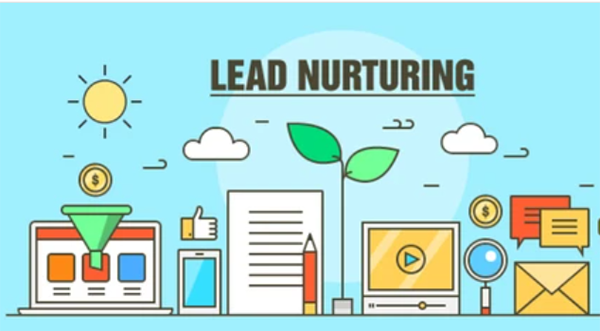Do you want to improve your lead nurturing process?
Lead generation is the first step in the sales funnel. It’s important to nurture quality leads and convert them into customers. If you don’t have a good lead nurturing strategy, then it will be difficult for you to generate more revenue from existing customers.
This guide will help you understand how to evaluate your lead nurturing process so that you can increase conversions and reduce costs per customer. It’s perfect for marketers who are looking to improve their current processes or just get started with lead nurturing in general!
What is Lead Nurturing?
Lead nurturing is a process that helps convert prospects into customers. It is an essential part of your marketing strategy because it provides you with the opportunity to make more sales by converting leads at different stages in their buying cycle.
Lead nurturing campaigns are all about finding out what your customers want and when they want it, so you can create content for them tailored to their interests and needs.
These campaigns can include everything from sending out newsletters to running remarketing ads. The only way to know if your campaign is successful or not is by evaluating it against key metrics.
What are the Top Metrics to Evaluate Your Lead Nurturing Process?
Here are the metrics to identify which strategies are working and which ones aren’t. And if something isn’t working, then it gives you an opportunity to improve upon it. Let’s discuss each one in detail below.
1) Click-through rates
The percentage of the audience who clicked on one or more links in a lead nurturing email message is referred to as a click-through rate.
If the CTR is low, it’s an indication that you need to improve your content. At the same time, a high CTR indicates a positive response from the audience.
A successful CTR is highly dependent on a number of factors unique to your company and advertising campaigns. For search, the typical click-through rate is 1.91 percent, whereas, for display, it’s 0.35 percent.
Email click through rates
If you send an email to nurture quality leads, you need to see the click-through rates of those messages.
Email click through rate is a significant metric because it shows how often people are clicking your links and ultimately taking action after viewing an email message.
CTRs between 10% and 20% are regarded as excellent for email newsletters.
You’ll be able to tell that a certain kind of email is effective for your target market if your CTR is high. Having a good click-through rate is crucial in assisting you in determining which advertisements are most effective for your target audience.
2) Conversion rates
The percentage of people who click on a link within an email and take a certain action is referred to as conversion rates.
Landing page conversion rates. A lead’s response to a call-to-action on your newsletters or emails, as well as their visit to the landing page and either completing a form or downloading material from the landing page is tracked by this statistic. If your landing page conversion rates are poor, it indicates that your offers or call-to-actions aren’t compelling enough for recipients
3) Sales cycle time/time to customer conversion
The length of time it takes for a lead to become a customer is known as the sales cycle.
How to Improve Your Time To Customer Conversion:
- Analyze how successful you are at producing marketing qualified leads (MQLs) with your lead nurturing.
- Analyze the number of sales-accepted leads in each lead nurturing campaign
Not only should marketing automation boost your MQLs count, but it should also improve the number of sales-ready leads.
If this is not the case, meet with your sales and marketing teams to find out why. This can be a problem when the lead scoring criteria in sales and marketing don’t match. But if they fix this, then you will see that it takes less time for people reading your advertisements to convert into buying customers.
4) Rate cost per lead
Leads that you’re nurturing need to result in paying customers, and they do so at a low cost. Keep in mind that your goal as a marketer isn’t to create leads- it’s to generate paying customers and at the lowest possible cost.
Your cost per customer should go down over time as more leads that typically drain out of the top of the funnel are sufficiently nurtured through the bottom of the funnel until they become customers.
5) Average engagement points per lead
As the basic objective of a lead nurturing strategy is to make cold leads warm, one of the metrics you should notice increasing is lead engagement. If you have lead scoring in place, compare your nurtured leads’ lead scores or better yet, just their engagement scores with those that haven’t been touched by nurturing. A significant drop in lead engagement is an indication that your lead nurturing material needs to be updated or that you should consider targeting your leads through new channels.
6) Cost per customer
The cost per customer is the marketing expense associated with acquiring a new lead and converting them to a consumer.
The cost per lead is significant since it allows sales and marketing teams to establish their sales goals, calculate a potential return on investment, and set advertising budgets.
To calculate this, the amount of money spent on lead nurturing is divided by the number of leads converted to paying customers attributed alone to the campaign.
Obviously, a low cost per lead is desirable. A low-cost-per-lead with a large number of high-quality leads indicates that your campaign is progressing well, but if your cost per lead is too expensive to continue the campaign, it’s hard to justify continuing it.
The goal of any measurement strategy is to track and improve on a regular basis. You’ll be able to take corrective action as needed, and you’ll always be in command of your lead nurturing flow.
7) Revenue per customer
Revenue per customer is the profit derived from customers obtained as a consequence of the lead nurturing campaign.
Lead nurturing, on the other hand, does not just increase the number of customers, it also helps to cross sell additional items and upsell more expensive items, upgrades, or other add-ons by providing well-crafted and targeted educational content.
Engaged leads are frequently also well-informed leads that, in the end, result in greater revenue per customer.
8) Return On Investment (ROI)
The ROI of a lead nurturing campaign is the profit derived from that campaign divided by its cost.
If you don’t measure your return on investment, then it’s impossible to determine whether or not your lead generation process is profitable and successful.
Therefore, measuring the effectiveness of your lead nurturing efforts will provide you with an exact measurement of the return on investment of your lead nurturing campaign.
What is the proper ROI percentage?
According to conventional thinking, a yearly ROI of about 7% or more is considered excellent.
How do you calculate ROI?
Step 1: Identify the total revenue generated by leads from all sources
Step 2: Determine how much was spent to generate those leads
Step 3: Divide the total revenue by lead generation costs to find your ROI.
By reviewing your key metrics regularly you can determine and improve your lead generation process.



